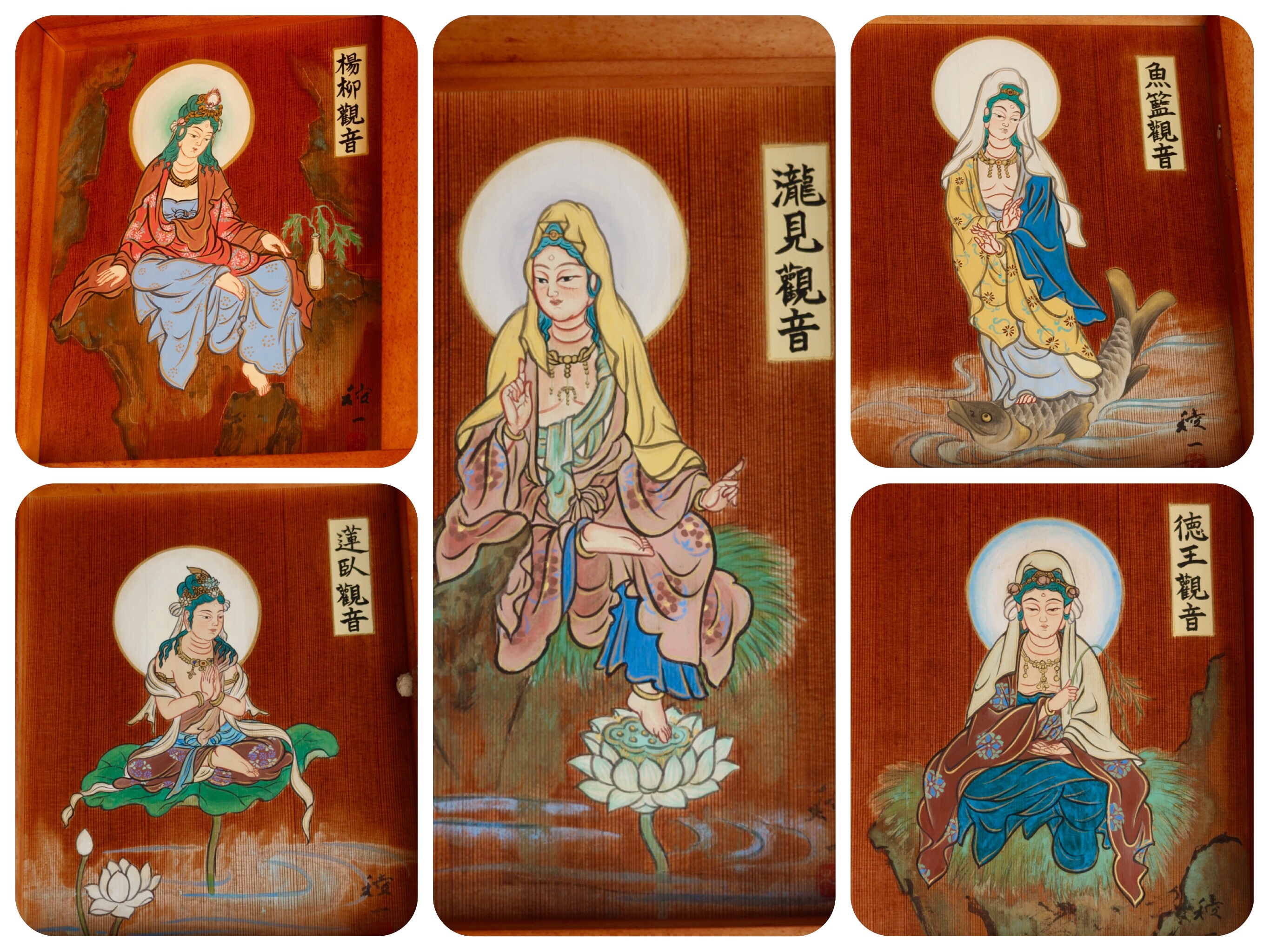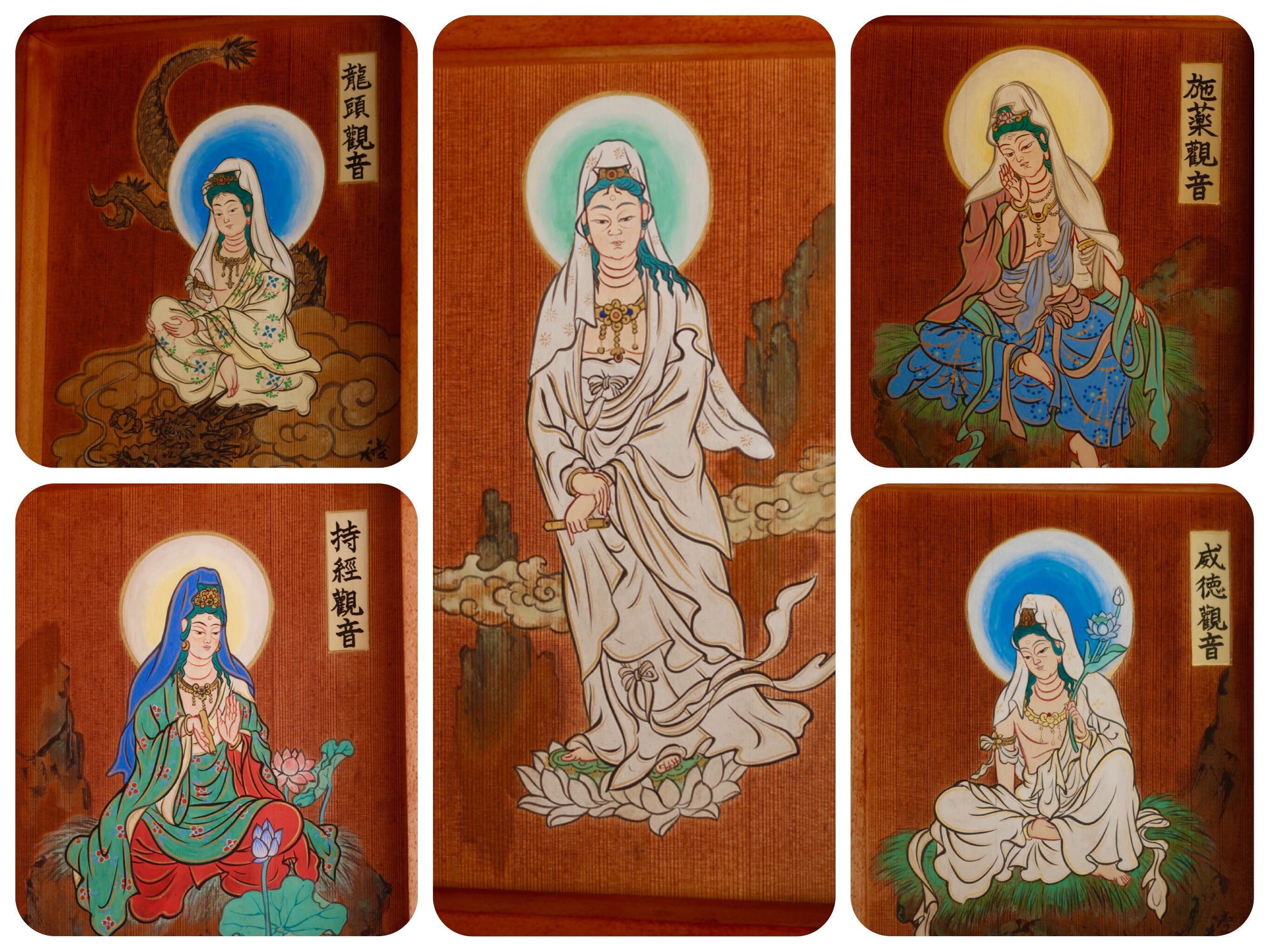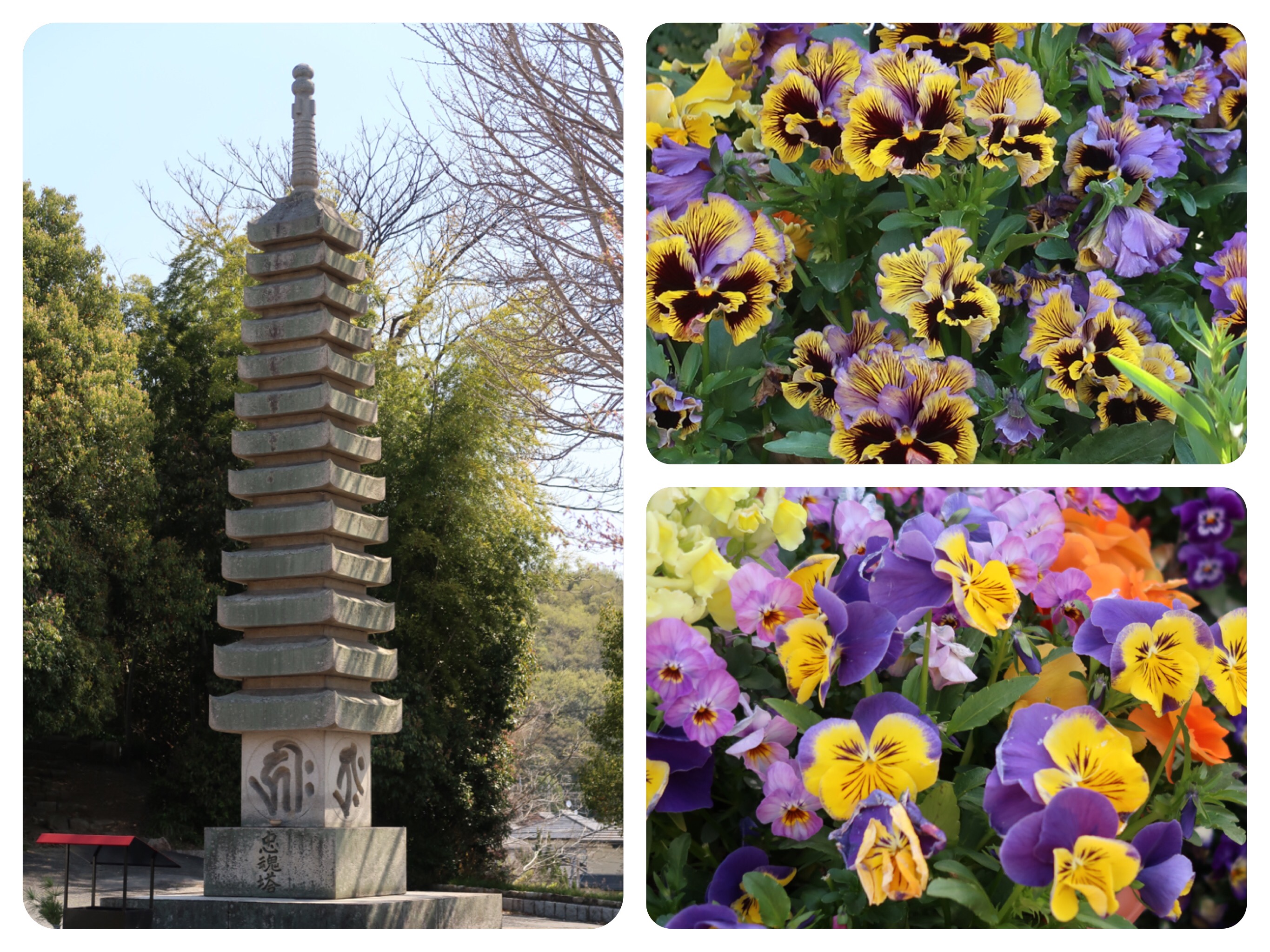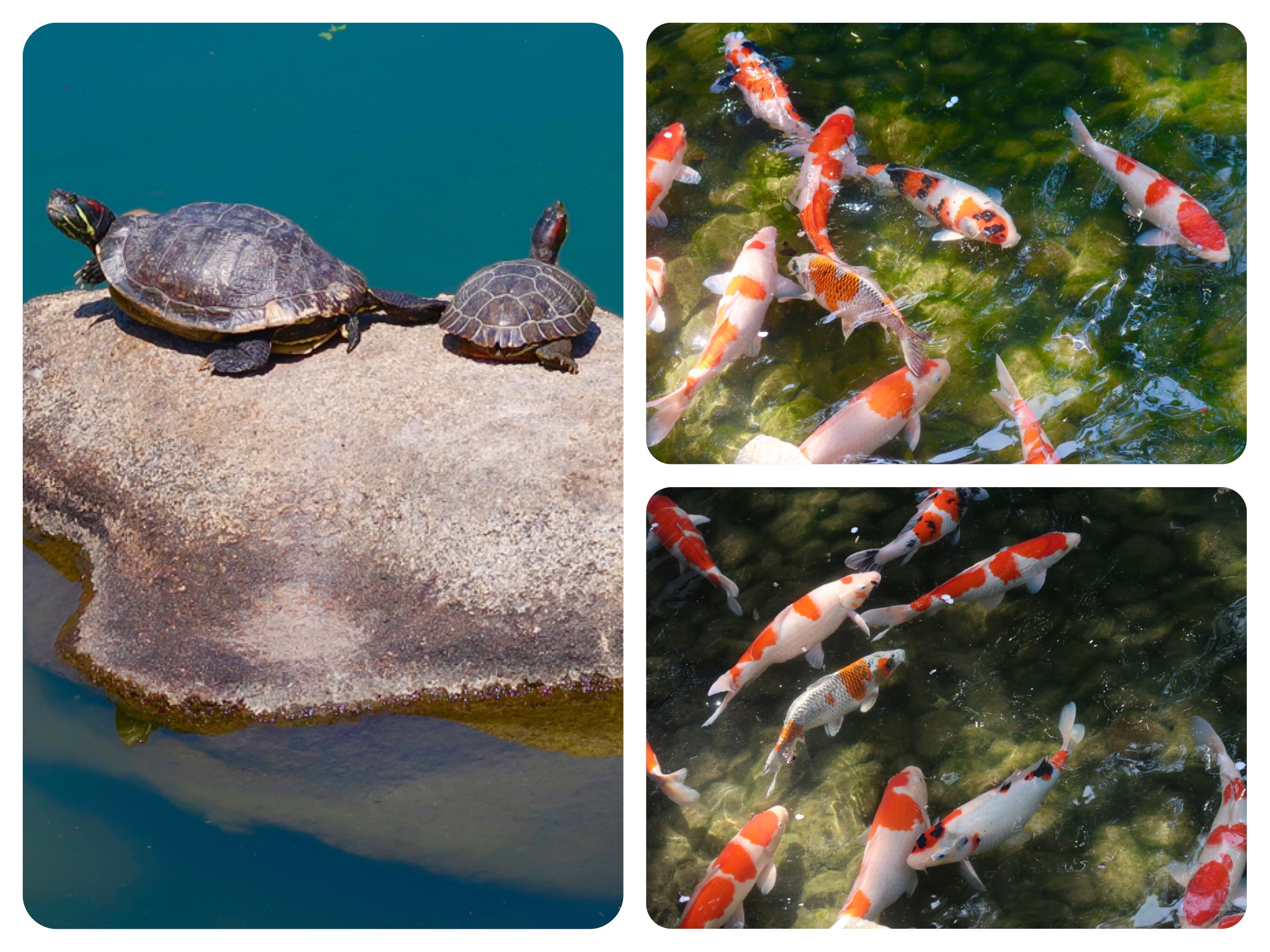Day 3 - The Chūgoku 33 Temple Kannon Pilgrimage, Japan - Hokai-in Temple in Okayama


















Day 3 - The Chūgoku 33 Temple Kannon Pilgrimage, Japan - Hokai-in Temple in Okayama
The next temple on our pilgrimage should have been Kiyamaji, Temple #4, which is located on a remote mountaintop, well north of Okayama.
Since we are walking this pilgrimage and not relying on public transport between temples, we decided to visit this temple at the end of our walk, on our circular return from Tottori in the north.
This way it will be on our natural circular route, instead of our needing to walk 75 Kilometers north and then 75 Kilometers back south, to continue on to temple #5.
Temple #5, Hokai-in Temple, is just a few Kilometers north of Okayama.
We walked by the botanical garden to the temple, making an effort to stay away from the main road, walking on small roads that meander along the river and the many small canals.
Some of the canals have pedestrian walkways that are barely wide enough for one person to walk on.
We had to stop and wait, to allow kindergarten kids to walk through.
They were so sweet in their matching hats and bags, all wishing us a good morning.
We lovingly said good morning to twenty kids, twenty times, returning a bow and a greeting to each and every one of them.
Whenever I see kids, and observe their sweet and life affirming joy, their sense of play and love of life, I wonder how in so few years, these lovely beings become sad or bitter, or barely functioning adults.
What goes so wrong in our minds to bring this about....
The temple’s front gate has blooming cherry trees on both sides.
The old wooden statues of the Nio guardians looked very uniquely carved.
The Temizuya is the water fountain you see in all Buddhist temples.
It is usually located just inside the temple gates, or on the main pathway up to the temple.
It is used for purification before entering the temple.
We washed our hands and made our way to the temple office.
This is a habit we developed while walking the Shikoku pilgrimage.
In Shikoku, so many bus pilgrims visit the temples, that if you get to the office just after a busload of pilgrims has arrived, you can wait for nearly an hour to get your pilgrimage book stamped.
But in this temple, and perhaps for this whole pilgrimage, going to the office first was not really needed.
No one was around, not even the resident priest.
We rang the intercom but nobody showed up, so we decided to do our worship ritual first.
We lit three sticks of incense in the ancient incense bowl, recited the Heart Sutra, and deposited our Osamafuda (pilgrims’ calling cards with our names and blessings) in the bin next to the Hondo (Main hall).
Then we threw a coin into the wooden box and rang the temple bell.
The sound resonated loudly over the hills surrounding the temple.
I knew that if anyone was around, they would now know that pilgrims had arrived.
And just as I thought, the window was open at the office and a smiling priest waved his hands to welcome us in.
His face was exceptionally bright.
I handed him our scroll to be stamped first.
He accepted it with both hands, closed his eyes and said a prayer, lifting the scroll up and bowing to touch his forehead and his third eye to the middle of the scroll.
Then he laid it in front of him and cupped his hands together in a prayer.
Carefully he unrolled the scroll, as if it were a sacred object.
I felt so warm and privileged by his actions.
He did not just take the scroll and do his job of stamping it; he treated it as the sacred object that it is.
After all, this scroll is indeed a sacred object.
It will collect stamps and handwritten calligraphy from each and every ancient temple on our walk.
Many of these temples are holy sites of miracles and blessings, carrying the heart wishes of so many souls throughout over a thousand years.
As he prepared to write in our book and scroll, we chatted with him.
Jules told him that I had painted the Kannon goddess in the middle of the scroll, and that we plan to walk the whole pilgrimage.
The priest was amazed and bowed before us.
“I have never met anyone who walked the whole pilgrimage.
It is going to be a long, tiring and hard journey, please be strong and do your best!,” he said with kindness and compassion in his eyes.
He then pointed to the ceiling and we realized that we were standing under a wooden ceiling beautifully painted with 33 individual paintings of the Goddess Kannon.
He told us that a painter from Kyoto had come to do this painting.
After he finished, we took our time and photographed each Kannon painting.
The priest was gone by that time, so we packed our things and started walking away.
He called us back, just as we were leaving.
He stood there with his wife.
In Japan, Buddhist priests are not celibate.
They are almost always married men, and the temple is usually passed down as an inheritance, inside one family.
We returned, and his wife gave us some cookies she had baked herself, in the shape of Sakura flowers and leaves.
He also gave us two bottles of green tea and two packages of traditional Japanese sweets, small pancakes filled with red bean paste.
Gifts that pilgrims are given are called “Osetai,” and we thanked him and his sweet wife and bowed many times.
Hokai-in Temple was founded in the year 780, right at the bottom of the slopes of Kongosan, a small wooded mountain.
The path south, towards temple #6, passed through the middle of town.
We stopped in the center of Okayama to visit its castle, and the famous Korakuen Garden.
The garden is a classic Japanese garden, with water elements, stones, carefully selected trees, places to sit and drink Matcha green tea, gold fish, turtles, manicured islands and moss.
From the gardens, the walk south was along a very wide six-lane commercial road, lined with auto tire shops, car dealerships, gambling places called Pachinko parlors, and chain food restaurants.
It was a long walk in the sun, down a sidewalk where nobody else walked.
When crossing in front of one huge Pachinko parlor, I saw a car approaching us fast.
The driver did not slow down when he saw us walking slowly across the gate.
When he came near us, I saw he was in distress, smoking and crying, not even aware that anyone was walking across.
A thought came to my mind that perhaps he just lost all his money or his weekly salary and was crying in sadness.
A feeling of sadness washed over me.
How sad it is to live a life devoid of Spirit in this world, living day to day to feed a fragile body that can get sick anytime, struggling with loneliness, trying to make a living, to find purpose and meaning.
On TV, I heard that nowadays loneliness, either by losing a loved one when older or not being able to find someone to share one’s life with, is the epidemic of this era.
A quarter of Japanese people under the age of forty, are virgins and have never been intimate with another.
Most older people among Japan’s aging population, say they feel lonely.
I was walking in a haze, feeling mostly sad and overwhelmed by the plight of so many people.
Walking really slows you down to feel energies you would normally not feel, when you drive by in your car or travel by train.
I needed to cheer myself up.
I needed to rest my achy legs.
The pain was shooting up from my feet to my knees and up to my buttocks.
My legs were really hurting.
My map was showing we were near one of a chain of cafes that I was familiar with.
They offer good and light hot food choices.
I was so happy to rest and have lunch.
I had steamed rice topped with an avocado salad, and Jules had a maple French toast.
We also had one of their many coffee blends, brewed in what looks like glass test-tube pots.
It was tasty but very strong coffee.
I usually prefer teas.
We planned to walk until sunset, and then take the train back to our hotel, and then to continue walking from the same train station the next day.
I could see the mountains in front of us.
The train station was just below the mountain range.
We walked for what seemed like forever, but the mountains did not get any closer.
We sped up our pace to make it to the 18:25 train at the Bizen Kataoka station.
When we neared the station, I could not see any sign for it.
I asked a boy on his bicycle to please help me find the station.
He walked with us part of the way and pointed out the narrow footpath that led to the station.
The station was only three steps up from the train track, with an old and rusty ticket machine.
Back in Okayama we knew we were too tired to go out for dinner after taking showers.
We bought some Onigiris (rice balls) and beautiful bite size mini fruit pies for dessert.
With love and blessings,
Tali
Daily Stats:
Steps: 42,421
Distance Walked: 31 Kilometers
Active Walking: 7 hours
Total Time: 9.5 hours
Total distance walked on the pilgrimage 88.5 Kilometers
Temple Visited: Temple #5 Hokai-in Temple 法界院
Accommodation: Daiwa Roynet Hotel Okayama Station